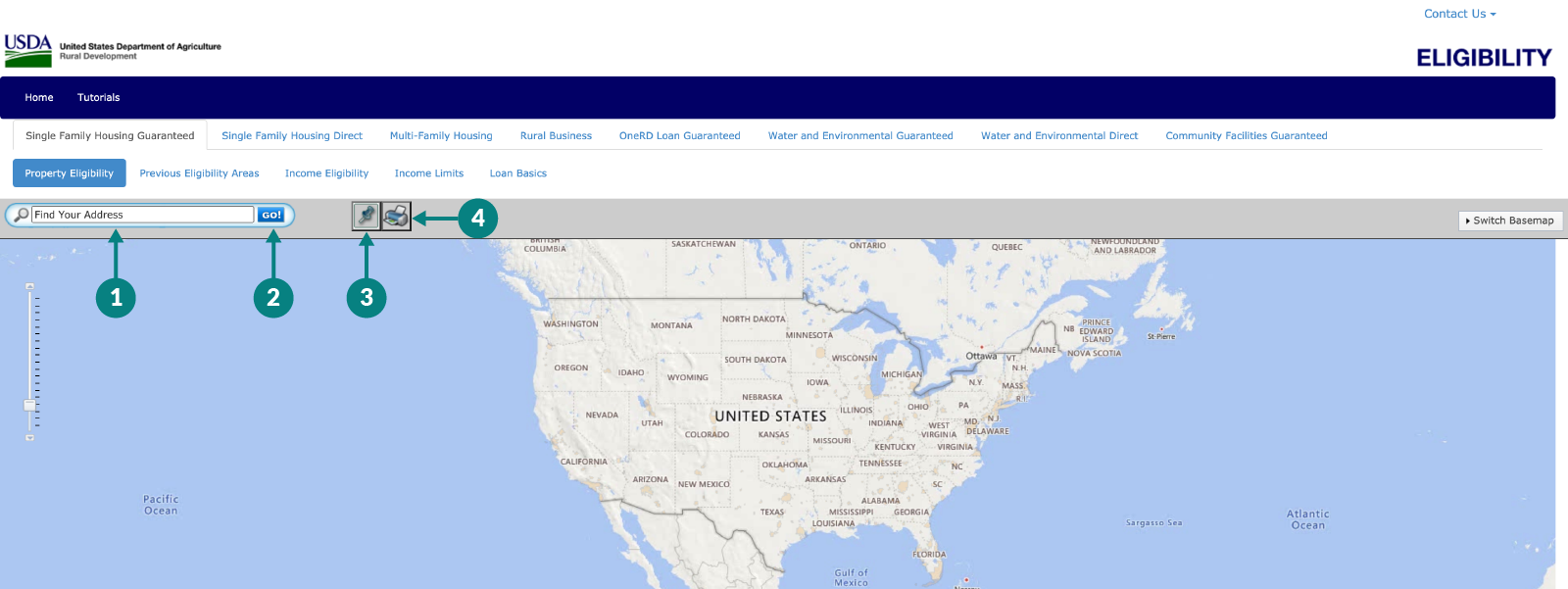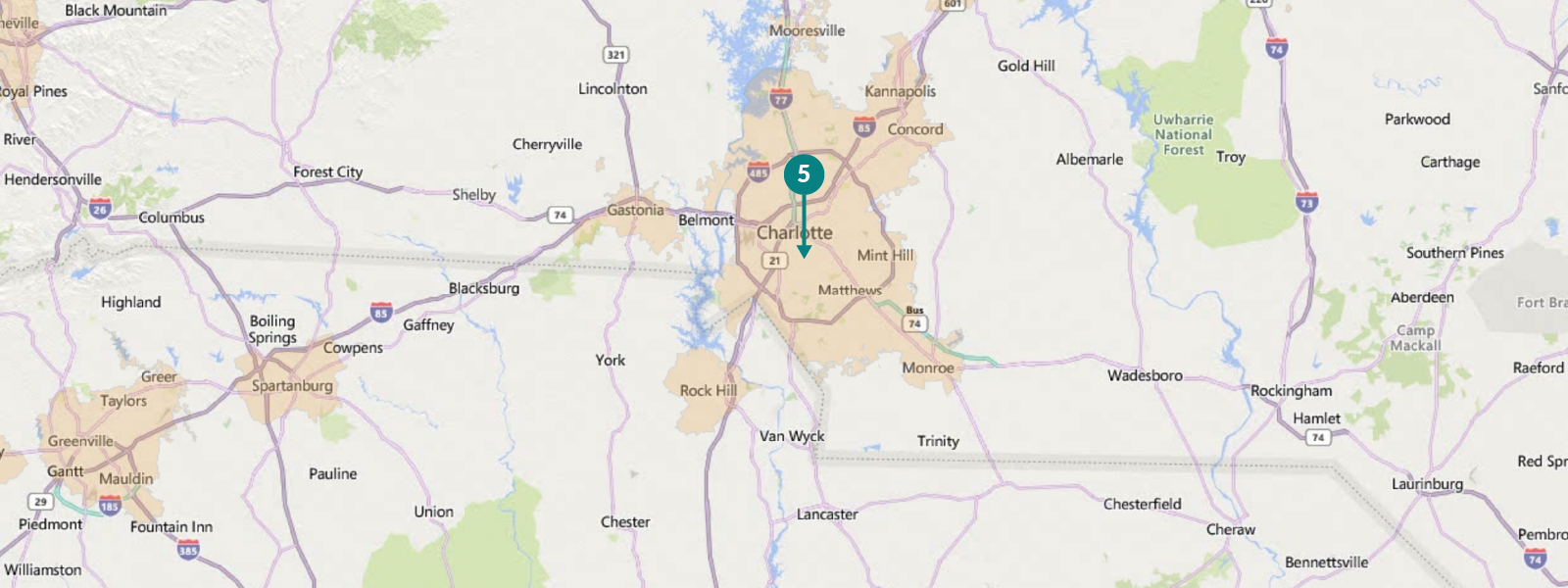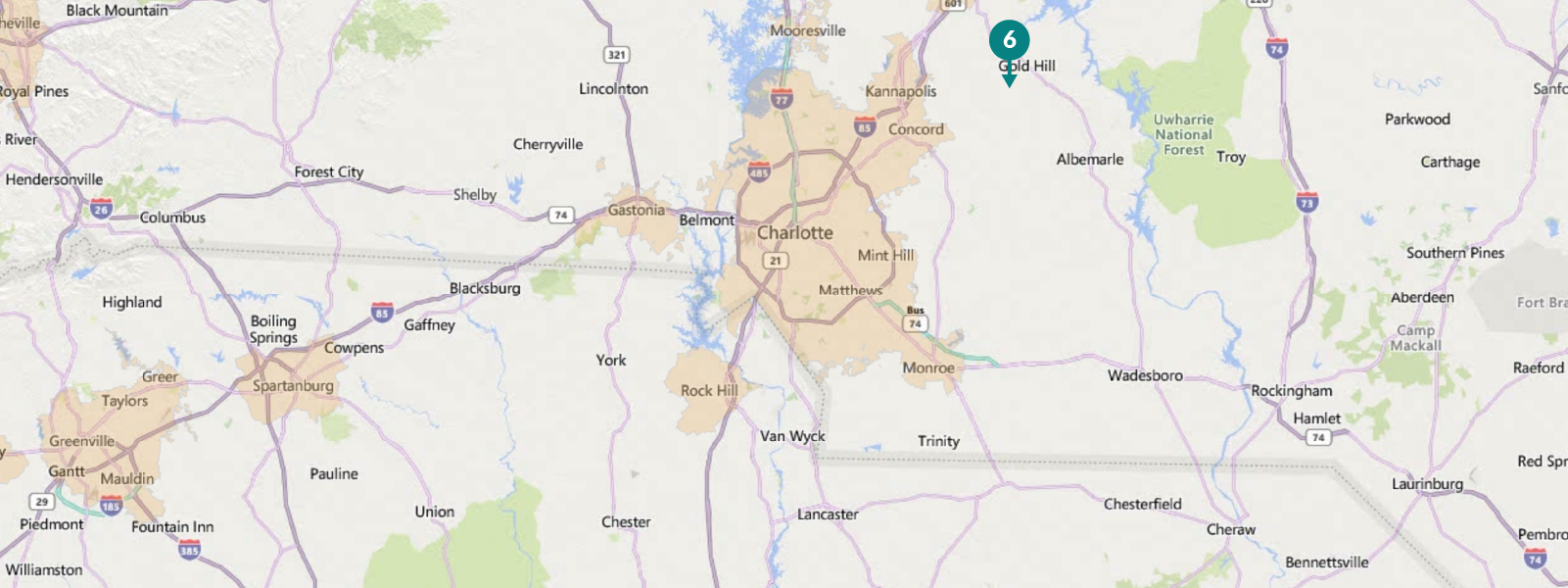How To Use the USDA Home Loan Map in Your House Hunt
The USDA loan map makes it simple to check if a specific home or area is compatible with a mortgage backed by the U.S. Department of Agriculture (USDA). USDA loans offer accessible financing to low- and moderate-income borrowers, but the home must be in an eligible area. The eligibility map is interactive, allowing you to look up whether a county, neighborhood or exact address is USDA-eligible.
What is the USDA eligibility map?
The USDA eligibility map is an online tool that helps you determine where you can finance a home with a USDA loan. Since USDA loans are limited to homes located in areas that meet the USDA’s definition of a rural location, one of the first steps to applying for a USDA loan is to see if your desired area qualifies as rural.
If you already have a specific home in mind, you can use the USDA loan map to check that address.
However, just because a property is in an area designated as rural on the USDA loan map, it doesn’t guarantee that you’ll be able to finance it with a USDA loan. You’ll still have to apply for a loan to determine your personal eligibility based on your financial situation.
Tools to help decide if a USDA loan is right for you
The USDA offers other interactive tools, including some that help you assess whether a USDA loan could work for someone with your income.
→ The Single-Family Housing Income Eligibility Calculator. Enter your financial, household and location information to find out whether you qualify for a USDA Single-Family Housing Guaranteed Loan.
→ The Single-Family Housing Self-Assessment. Enter information about your household, location and whether you want to build, purchase or refinance a home to find out if a USDA Single-Family Housing Direct Loan is an option for you.
USDA property eligibility requirements
“Property eligibility” may not be a familiar term, even if you’ve purchased a home in the past. However, it’s relatively simple: Property eligibility requirements are limitations on which properties can be financed with a USDA loan.
The USDA loan program is designed to improve access to affordable homeownership in rural areas, which means it has more specific requirements about the properties it will guarantee than the average loan program.
Here are some of the main eligibility requirements for properties purchased using USDA loans:
Location: Must be rural
As we’ve covered, the USDA requires a financed property be located in an approved rural area. Keep in mind, though, that while most of us may think farms, fields and tiny villages define a rural area, the USDA definition of a designated rural area is broader.
What qualifies as a designated rural area?
The USDA defines a rural area as any area that is:
- Not part of an urban area. This can include a wide variety of land types, including open country, towns, villages and even some cities.
- Has a small population, consisting of any of the following:
- 2,500 inhabitants or less
- Between 2,500 and 10,000 inhabitants, but “rural in character”
- More than 10,000 inhabitants, but no more than 20,000
- Not within a Metropolitan Statistical Area (MSA).
- Has a “serious lack of mortgage credit,” which is determined by the Secretary of Agriculture and the Secretary of Housing and Urban Development (HUD).
Each USDA field office re-evaluates the designation of the land in its local area every three to five years.
Property type: Must be a single-family dwelling
The USDA’s definition includes detached single-family homes; attached homes (like duplexes, townhouses or villas); condos; modular homes or manufactured homes. The property must also be a primary residence.
Quality: Must be safe, sanitary and sound
Homes financed with USDA loans must meet HUD’s minimum property requirements outlined in the FHA Single Family Housing Policy Handbook. These standards also apply to homes financed with Federal Housing Administration (FHA) loans, and address the very basic aspects of a home that ensure a minimum level of comfort, health and safety. They include access to clean, hot water; sufficient systems for dealing with human waste; electricity; and adequate heating.
Property value and size: Must be modest
USDA loan programs are intended to be used to purchase “modest” homes, which means that eligible properties cannot:
- Be used primarily for producing income, for example, through farming, agriculture or any other commercial use.
- Consist of buildings designed for industrial or commercial use, rather than residential use.
- Be worth more than the loan limit for the area they are located in. There are loan limits for homes purchased with some types of USDA loans. The limits are typically 80% of the local HUD 203(b) limit, but there are exceptions.
- Have excessively large living areas. Most dwellings financed by USDA loans are 2,000 square feet or less. However, eligible properties can be any size — there’s no specific size limit on acreage.
- Have certain prohibited amenities, like in-ground swimming pools, if you’re using a USDA Direct loan.
How to use the USDA eligibility map
Whether you have a property in mind that you want to buy, or you just want to look for USDA-eligible homes, start by opening the USDA loan map and following these steps:
Enter your address If you have a specific address to check, type the full address (including the ZIP code) into the search bar on the map. Then, click “Go” next to the search bar.
Check if you’re eligible The map will zero in on the address and put a pushpin on the location. Then, you’ll see a pop-up that’ll let you know immediately whether that address is located in an eligible area.
Change the address If you want to continue searching on the map for another address, you can simply delete the address you entered and type in a new one. You also have the option to click on the pushpin icon above the map next to the search bar, which then allows you to drop a new pin on the map.
Print a copy of the map If you want to print a map copy at any time, you can click on the printer icon next to the search bar.

Zoom out to check for USDA-eligible areas If you don’t have a property address to check, you can zoom out on the map and look at a larger area. You’ll notice that some areas have a peach-colored background and others are white. The peach tone indicates that homes in that region aren’t in USDA-eligible areas. Areas with a white background generally include USDA-eligible homes.

Drop a pin to check for USDA-eligible areas In addition to looking at the color indicators on the USDA property eligibility map, you can click on the pushpin icon and drop it in any location on the map. A pop-up box will tell you whether that location meets USDA property eligibility requirements.

Clear the map Simply refresh your browser if you want to clear the map and start a new search.
Zooming in and out on the USDA loan map can give you an idea of which areas have available properties that may meet USDA qualifications. While USDA loan requirements start with the location of a property, there are many other USDA loan qualifications to meet.
USDA home loan programs and lenders
USDA rural housing loan programs
Three main USDA loan programs apply to individual homebuyers:
→ Single-Family Housing Direct Loans are called “direct” because they’re issued by the USDA, rather than a third-party lender.
→ Single-Family Housing Guaranteed Loans are issued by an approved lender but “guaranteed” by the USDA. If you default on your loan, the USDA will pay the lender up to 90% of the loan balance.
→ Section 504 Single-Family Repair Loans and Grants help rural homeowners with very low incomes pay for home repairs. To qualify, homeowners must earn within the “very low” income limit in their area.
How to apply: Finding USDA lenders
Direct loans
As mentioned above, USDA direct loans come directly from the government. This means skipping the search for a lender and applying directly at a local USDA office. You can look up your Rural Development state office on the USDA website.
Guaranteed loans
Third-party lenders issue USDA guaranteed loans. To find a lender in your area, you can use the USDA list of active Single Family Housing Guaranteed Loan Program (SFHGLP) Lenders. The list shows lenders that have recently issued USDA loans in each state, but don’t feel limited to only this list.


